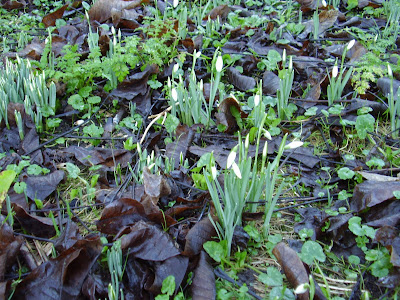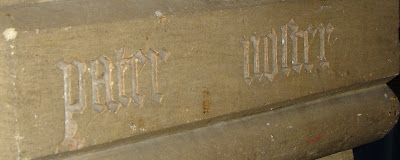 Most surnames may only have evolved once. All of those with the name (give or take a little illegitimacy and name changing along the way) will be descended from the couple who first used it. I’ve been re-reading a paper which goes over the best know recent study which demonstrated this clearly for the Sykes surname. It showed how many men with the surname shared similar profiles on their Y chromosomes, and it pointed to a single point of origin in the thirteenth century (which is precisely when surnames began to be adopted commonly).
Most surnames may only have evolved once. All of those with the name (give or take a little illegitimacy and name changing along the way) will be descended from the couple who first used it. I’ve been re-reading a paper which goes over the best know recent study which demonstrated this clearly for the Sykes surname. It showed how many men with the surname shared similar profiles on their Y chromosomes, and it pointed to a single point of origin in the thirteenth century (which is precisely when surnames began to be adopted commonly).And some of these names may not have spread widely until quite recently. I was once lent a list of surnames which it said were virtually unknown outside a single county before the nineteenth century. Even today I knew many more local people with names on the Lincolnshire list (I remember Blades, Capes and Leggett were among them) than on the Norfolk list.
Now I’ve been introduced to http://www.nationaltrustnames.org.uk which will plot the relative frequency of the occurrence of a surname in the 1881 census. The clearest result I’ve come up with is for one of my wife’s Scottish grandparental surnames: Diack shows up as being most common in 1881 in the Aberdeen postcode area and uncommon in every single other postcode area.
So I’ve been using it as a pastoral tool on some visits and discovering how many local people really do look like having very deep Lincolnshire roots. The examples in the last two weeks have been with the Motley and Riggall surnames. Both were most common in the Lincoln postcode area in 1881. Motley’s most frequent occurrence was in the Horncastle area and Riggall’s in the Louth area. Riggall had spread least at that date; the only other postcode areas where the surname had any level of regular occurrence is in the neighbouring Doncaster and Peterborough ones which cover all of northern and southern Lincolnshire.
By contrast, the photograph illustrates one contribution to breaking up this pattern with the coming of the railways. It is a boundary stone on the edge of railway property at the Cartergate Level Crossing in Grimsby, a rare survivor of the original Manchester, Sheffield and Lincolnshire Railway. The arrival of this railway triggered the huge expansion of Cleethorpes at the end of the line, and its route explains why so many visitors came from south Yorkshire in particular (and also explains why today I can catch a direct train to Manchester Airport but not to London).


















